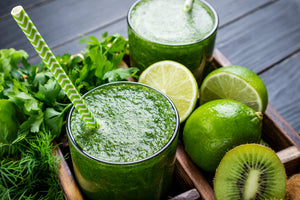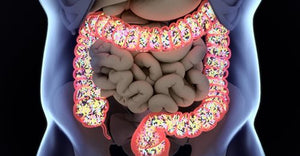‘Plum’ Crazy

As we’ve mentioned before, with the ever-growing popularity of low-carbohydrate and ketogenic diets, people are becoming more conscious of the total amount of carbohydrate they consume, and many look to specifically limit the amount of fructose they get—even the fructose that occurs naturally in fruit, as opposed to high-fructose corn syrup added to processed foods. For those concerned about these issues, the only fruits that typically get the “green light” are berries. Although some individuals may need to strictly limit their fruit consumption, others may do very well with a generous amount of whole, unprocessed fruit in their diet. One of the fruits that shouldn’t automatically be considered off-limits is plums.
Plums are a good source of vitamins C and K, vitamin A precursors, and they have small amounts of potassium, copper, manganese, and other minerals. One plum (about 66g or 2⅛” in diameter) contains just 30 calories and 7.5g of carbohydrate—hardly the kiss of death for a low-carb diet. (After all, of those 66g, water makes up over 57g!) The carbohydrates break down as follows: 1g fiber, 1g sucrose, 3.3g glucose, and 2g fructose—not exactly enough to warrant a skull and crossbones!
Moreover, like other dark-colored fruits, plums are rich in antioxidant anthocyanins and other potent phenolics. One study that evaluated plums at different stages of ripening found that total antioxidant activity (TAA) was nearly twenty times higher in plum peels than in plum flesh. The ripening process increased TAA in the peel, but the effects differed depending on the type of plum cultivar, with total phenolic content increasing in some but not others. Researchers have said that one plum provides the same antioxidant capacity as a handful of blueberries. This is good news, because, depending on the season, plums may be a more budget-friendly choice than fresh blueberries.
Plums’ nutrient and phytochemical content are also affected by their growing conditions—whether conventional or organic, and differing soil conditions. In comparing the same plum cultivar in the same climate, differences in macronutrients were marginal, but the concentration of antioxidants and phenolic compounds differed markedly. Organically grown plums grown in soil covered with “natural meadow” contained higher amounts of ascorbic acid (vitamin C), alpha- and gamma-tocopherols (vitamin E), and beta-carotene, compared to other growing methods. Plums grown organically in soil covered with trifolium (a type of clover) showed the highest phenolic acid content, while total polyphenols were higher in conventional plums. Conventional plums had higher levels of quercetin, while organic plums were higher in other types of phytochemicals.
An additional key phytochemical in plums is chlorogenic acid (CGA). CGA is abundant in fruit, as well as coffee, tea, wine, and olive oil—so, not surprisingly, it exhibits antioxidant properties, as all of these foods are well-regarded for their antioxidant capacity. More interestingly, mouse models have shown CGA to be helpful for reducing anxiety, likely via activating benzodiazepine receptors. (Some of the more commonly prescribed medications for anxiety work through similar mechanisms.) CGA also supports a healthy inflammatory response and may be helpful for helping blood glucose control and insulin sensitivity, which might underlie the generally accepted view that fruit (as well as tea, wine, and olive oil) supports good health.
Much of the research supporting other impressive health benefits from consuming plums has been conducted using dried plums (prunes). Plums obviously contain all the same bioactive compounds as prunes; they’re simply more concentrated in prunes due to the removal of water.
Plums make an excellent, refreshing snack during the summer (especially if they’ve been stored in the fridge), and frozen plums may be available in some stores year-round. But snacking on the fruit in its whole form isn’t the only way to enjoy these delicious drupes. Here are some creative grain and dairy-free ways to incorporate plums into the diet:
- Vanilla plum jam
- Paleo spiced plum cake
- Coconut plum crumble
- Chocolate prune bars
- Chinese-inspired plum sauce – makes a great dip for chicken or pork!
Sources
- Usenik V, Stampar F, Kastelec D. Phytochemicals in fruits of two Prunus domestica L. plum cultivars during ripening. J Sci Food Agric. 2013 Feb;93(3):681-92.
- Lombardi-Boccia G, Lucarini M, Lanzi S, et al. Nutrients and antioxidant molecules in yellow plums (Prunus domestica L.) from conventional and organic productions: a comparative study. J Agric Food Chem. 2004 Jan 14;52(1):90-4.
- Bouayed J, Rammal H, Dicko A, et al. Chlorogenic acid, a polyphenol from Prunus domestica (Mirabelle), with coupled anxiolytic and antioxidant effects. J Neurol Sci. 2007 Nov 15;262(1-2):77-84.
- Meng S, Cao J, Feng Q, Peng J, Hu Y. Roles of Chlorogenic Acid on Regulating Glucose and Lipids Metabolism: A Review. Evidence-based Complementary and Alternative Medicine : eCAM. 2013;2013:801457.
- David Brady







Comments 0